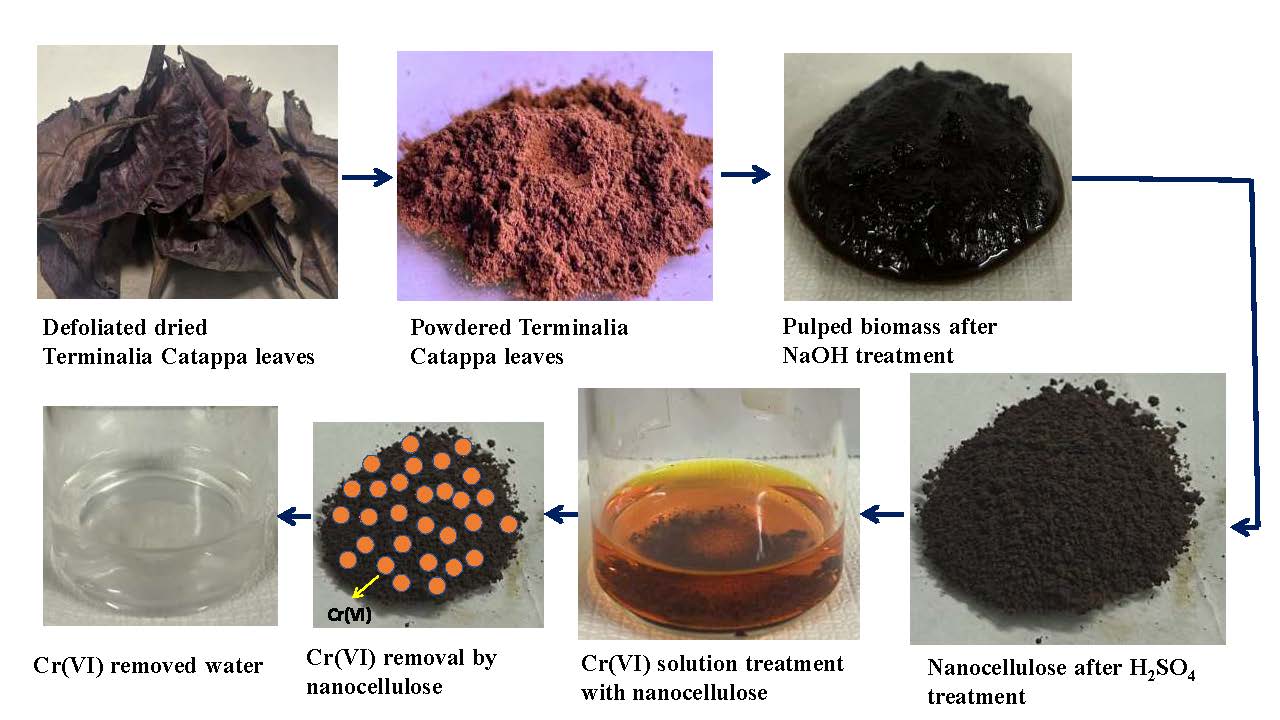Removal of Chromium from Aqueous System Using Nanocellulose Prepared from Defoliated Terminalia Catappa Leaves
Main Article Content
Abstract
Nanocellulose is considered as a sustainable and renewable nanomaterial due to its abundant availability, biodegradability and biocompatibility characteristics. The study demonstrates the synthesis of nanocellulose from defoliated leaves of the Tropical Almond (Terminalia catappa) plant, abundantly available residual plant biomass and its subsequent use in eliminating Cr(VI) from the water system. The study demonstrates the preparation of nanocellulose by chemical means, employing NaOH and H2SO4 as chemical agents. Characterization techniques like FTIR, SEM, and XRD were used to study the chemical composition and morphology of the resulting nanocellulose. The characterization studies confirm the formation of nanocellulose from the plant biomass. The Cr(VI) adsorption study of the produced nanocellulose is carried out through fitting different adsorption isotherm models and kinetic models. According to the study, Cr(VI) adsorption gradually increases as time period of treatment increases. A maximum adsorption of 98.4% is attained for time period of treatment of 75 min. Overall, the study proposes mixed types of adsorption (chemisorption and physisorption) of Cr(VI) on nanocellulose. This comprehensive research contributes in developing affordable, sustainable nanobiomass from plentiful bio-waste for use in the removal of heavy metals from water streams.
Article Details

This work is licensed under a Creative Commons Attribution-NonCommercial 4.0 International License.
Published articles are under the copyright of the Applied Environmental Research effective when the article is accepted for publication thus granting Applied Environmental Research all rights for the work so that both parties may be protected from the consequences of unauthorized use. Partially or totally publication of an article elsewhere is possible only after the consent from the editors.

